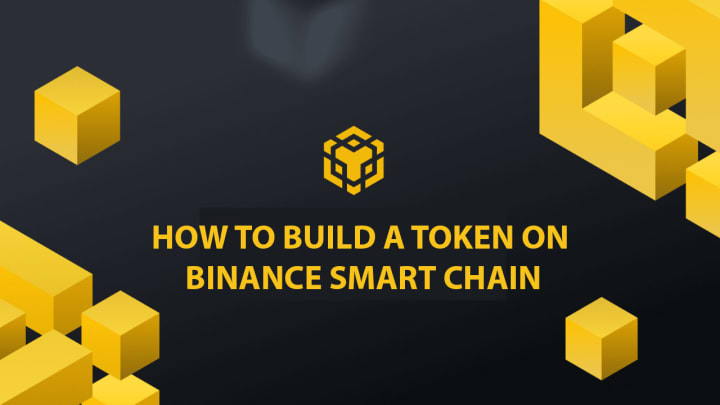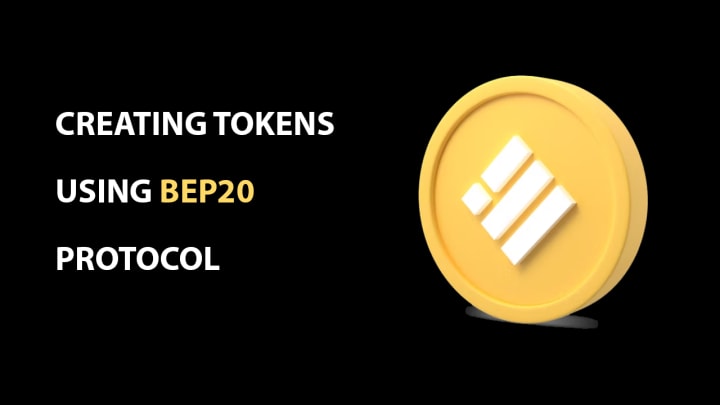
Are you looking to develop a token on the Binance smart chain? Then you’re in the right place. This article explains how to create a BEP20 token on the Binance Smart Chain using coding skills and the Binance Smart Chain testnet. BEP20 is a token standard implemented on Binance Smart Chain and other networks that use the Binance Chain protocol.
It is similar to the Ethereum ERC-20 token standard, allowing users to deploy sample BEP20 tokens and verify their source code.
A quick overview on the Binance Smart chain token development
To get started, developers must first set up a MetaMask wallet with access to the Binance Smart Chain testnet. Then they can use Remix, an online IDE for coding in Solidity, to write a smart contract for their token.
Once created, the smart contract can be deployed on the Binance Smart Chain testnet and verified on BSCscan or regular Binance Chain explorer such as BNB Beacon. BSCs testnet is a completely separate blockchain from the mainnet, allowing developers to deploy and test their smart contracts without fear of breaking the mainnet.
To create a simple BEP20 token on Binance Smart Chain, developers need basic coding skills and an account with an associated wallet on the Binance Chain. Utilizing BSC allows for users to obtain a testnet node and create their own tokens using the Binance Smart Chain Explorer.
For example, if someone wanted to launch their own ERC-20 token on Ethereum, they would need to deploy the smart contract using Solidity or another related language. Similarly, those wishing to launch their own token on the Binance Smart Chain would need to deploy a smart contract using its proprietary programming language.
These things have to be done to create your own token in the binance smart chain. Let's take a look at how to build a token on binance smart chain in detail.
How to build a token on binance smart chain?

To build a token on Binance Smart Chain, you need some basic coding skills to deploy a smart contract to Binance Smart Chain and transfer tokens from an account. The technical phase of creating a simple BEP20 token on Binance Smart Chain using Solidity is quite easy.
You need to make a note of the address, account, and spender. Then, you can approve the transfer of tokens from the spender to the account address. With these steps, you can easily build a token on Binance Smart Chain.
Make sure to take careful notes during this process and double-check your contract before deployment to ensure it is correct and secure. Building a token on Binance Smart Chain requires implementing the BEP20 token standard.
As mentioned before, this is similar to ERC-20, the Ethereum standard used for most cryptocurrency tokens. The BEP20 standard is used to create tokens that are compatible with the Binance Chain and can be used in its ecosystem, such as the BNB Beacon.
This includes exchanges, wallets and other components. It is important to include all of the necessary standards when creating a token on Binance Smart Chain. The process of building a token on Binance Smart Chain involves coding and deploying a smart contract based on the BEP20 Token Standard.
Once deployed, it will become part of the system and users will be able to utilize it within the network like any other cryptocurrency. Crypto tokens on Binance Smart Chain (BSC) are swapped tokens that are compliant with the BEP-2 standard, which is a regular Binance Chain.
It offers higher transactions per second compared to the regular Binance Chain and is part of the emerging blockchain technology. The crypto zone of BSC boost’s 2000 transactions per second, far exceeding the average blockchain number.
Building a token on Binance Smart Chain requires developers to create their own standard and use smart contracts in order to deploy it. This will allow users to develop decentralized applications that support smart contracts.
The creation of crypto tokens is a great way to create your own tokens and use them in applications and digital resources. You can also develop other blockchains, such as Ethereum, to have more options when creating your own token.
It's important to keep in mind that building tokens on Binance Smart Chain needs technical knowledge and developers who are familiar with the source code. Developers must also understand the creation process and customization of their token, as this will allow them to develop users of the token on a single blockchain.
To build a token on the Binance Smart Chain, there are several steps that must be taken. First, developers must verify the source code of their token to ensure its accuracy and stability. After verifying the source code, developers must deploy their token contract on a testnet such as Remix or BSC Testnet.
This will allow developers to mint their own tokens using the _mint call in their wallets. To complete this process, developers can connect their MetaMask wallet to the BSC Testnet and deploy a sample BEP20 token. After deploying the token on the testnet, developers can use BNB tokens as gas fees to mint more tokens from our development account.
Once finished with development, users can move to an ecosystems testnet such as Public BSC Network and implement a custom BEP20 standard for their project.
Creating Tokens using BEP20 Protocol

This phase covers the steps needed to create a BEP20 token on Binance. First, you will need to code a smart contract for the BEP20 standard, deploy it to the Binance Smart Chain testnet, verify its source code, and add the BNB token to MetaMask.
Once the BEP20 token is deployed, it will be available to use on the BNB beacon and BSCscan. The BEP20 token standard is a cryptocurrency token standard which uses the same code as Ethereum's ERC-20 standard but it has been adapted for use on the Binance Chain.
This makes it possible to use the same functionality as an ERC-20 token with additional features like fast transfers and low fees. To deploy a sample BEP20 token, you can use Remix, a browser-based IDE, to write your smart contract code and then connect it to the testnet using MetaMask.
Once your code is verified and deployed, you can start using your new token on the BNB ecosystem. You can also easily list your new tokens on exchanges such as BSCs or other platforms that accept these tokens.
To create a BEP20 token on Binance, you need to have basic coding skills and understand the BEP-2 standard. If you want to create a simple BEP20 token, then you will need to use the normal Binance Chain.
If you want to swap users from regular Binance Chain to their own standard, then they will need to deploy a smart contract on the Binance Smart Chain and use their own standard. You can also list your tokens on other exchanges that accept these tokens such as the BSCs or BeP2 platforms.
Token generator - To create a BEP20 token on Binance, you need to use a token generator. This will allow you to easily transfer your tokens from one chain to another and give blockchain developers the flexibility to build distributed applications. The main goal of creating a BEP20 token is to provide users with access to different blockchain networks and enable them to build their own users.
The Binance Smart Chain platform provides developers with the tools necessary for them to develop smart contracts and give users a flexible format for their tokens.
Employee bridge contract - In order to create a BEP20 version of your tokens, you need to create an employee bridge contract. This contract will give your tokens the ability to be used on the Binance Chain side and transfer it over to the Ethereum side of things. Once you’ve created this version of your tokens, you can then give them out or burn them depending on what you plan on using them for.
The Binance Bridge is a tool that allows users to transfer their assets from one blockchain platform to another without having to take custody of them. This means that if you want to give your money in ETH or ERC-20 tokens, you can easily do so without having any ETH or BNB chain side exposure.
Token contract on the BSC public network - To create a BEP20 token on Binance, the first thing to do is to deploy a token contract on the BSC public network. To do this, you will need an account with access to our Metamask wallet and our development account. After the deployed contract is completed, you can use it to mint new tokens and call the finish minting function.
To complete this process, you need to acquire a BNB chain node and the corresponding BNB tokens. Finally, in order for your system to be part of the BSCs ecosystem's testnet, you must transfer some BNB tokens from your owner address as the default last step. The amount of required BNB depends on the network fees associated with each transaction in the system.
Summary
Binance token development is not an easy task that can be done by everyone. It needs coding knowledge and more experience is needed to develop it in the right way. With CryptoApe you can get the best binance token development service according to your business demand. We have an experienced group of blockchain developers to build the best binance token within a short period.
In CryptoApe, we also have many predeveloped solutions like Kucoin clone, Huobi clone, Remitano clone, Coinbase clone, Poloniex clone, Localbitcoins clone, and many more. Other than this, we also provide ICO, STO development and other blockchain related projects.
Get your free demo
About the Creator
CryptoApe
CryptoApe Technologies is an exclusive cryptocurrency and blockchain development company that offers instant and complete crypto solutions to kickstart your business.






Comments
There are no comments for this story
Be the first to respond and start the conversation.